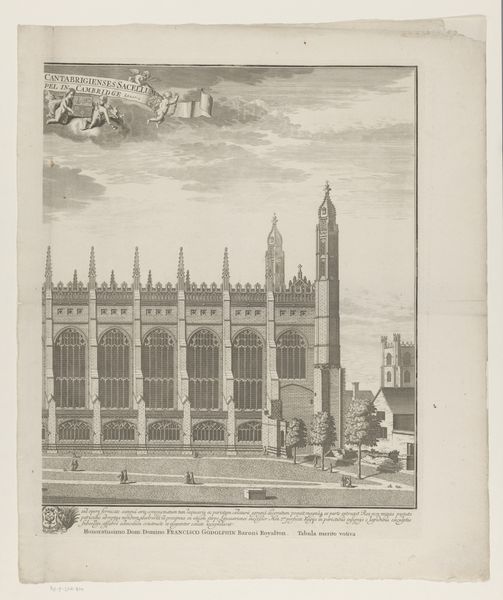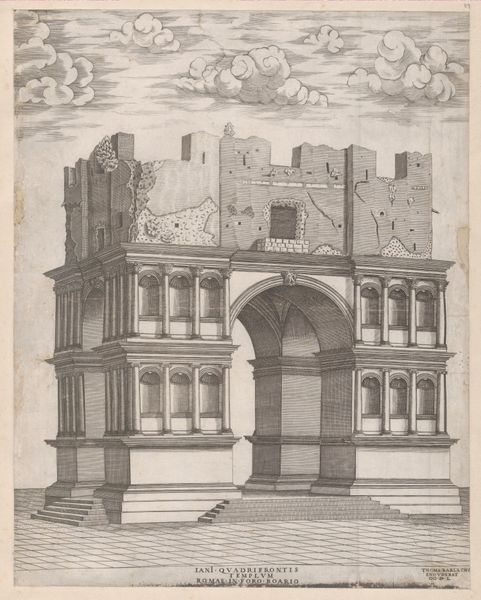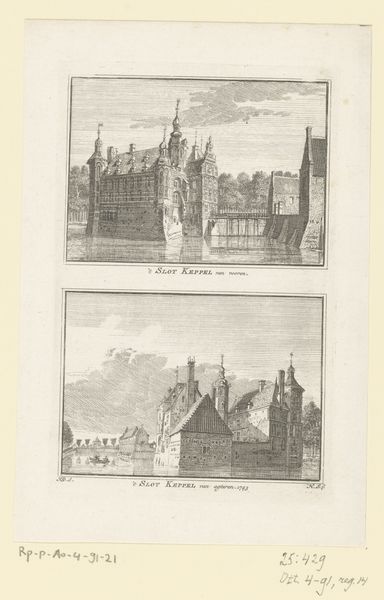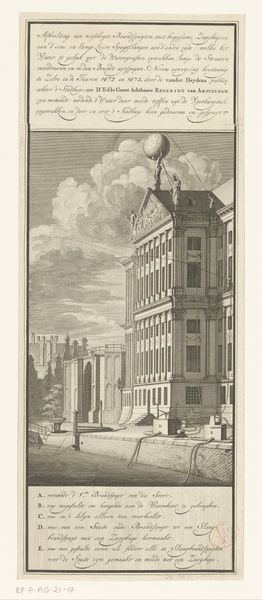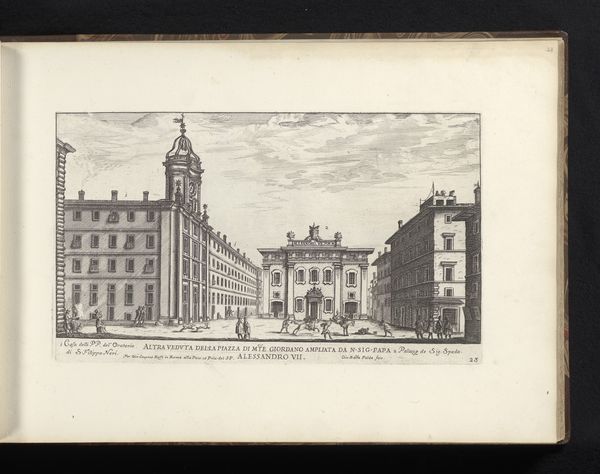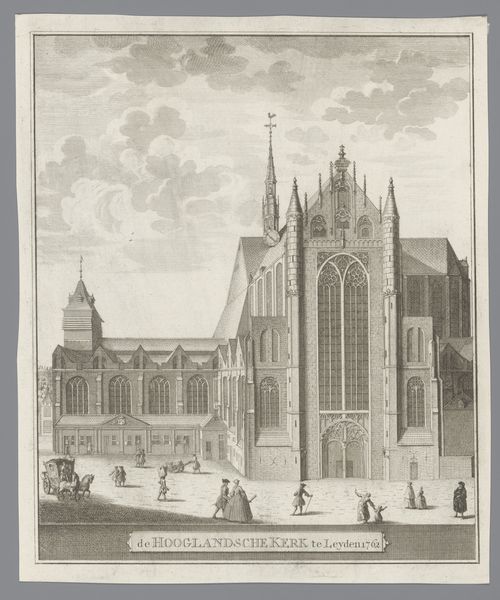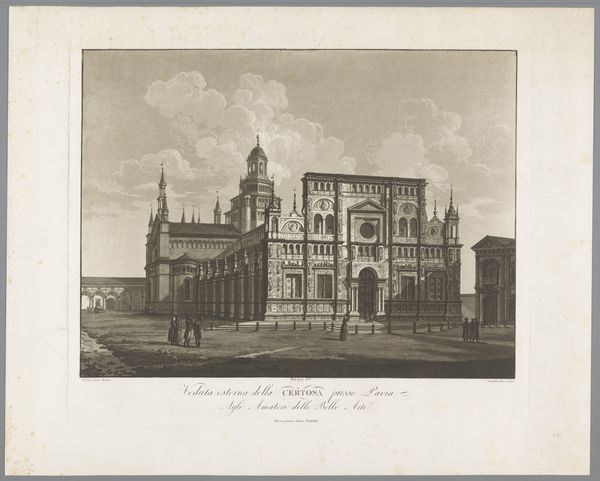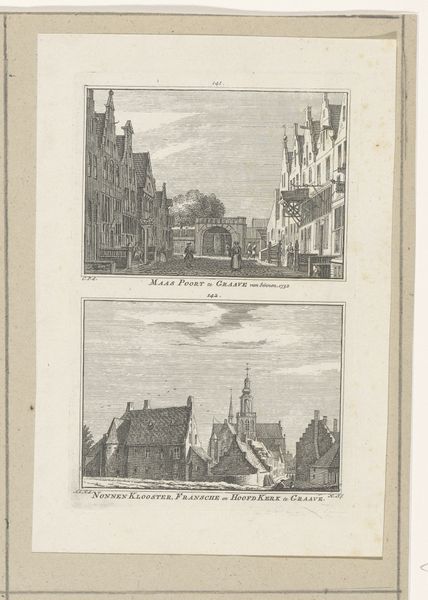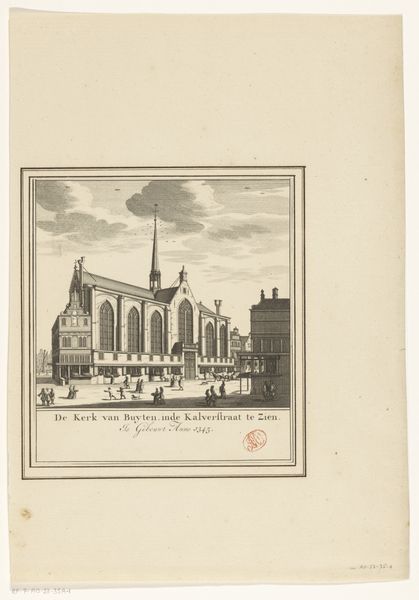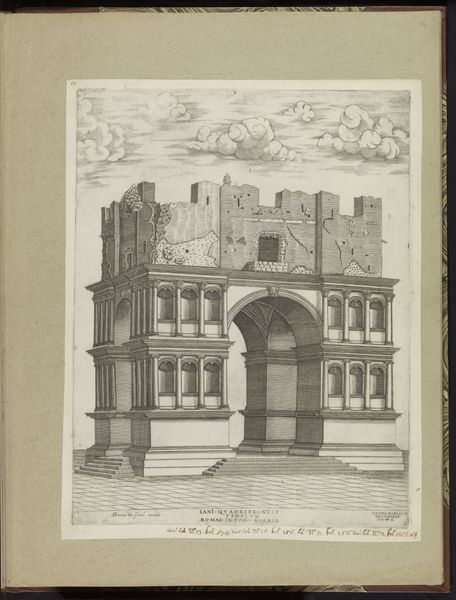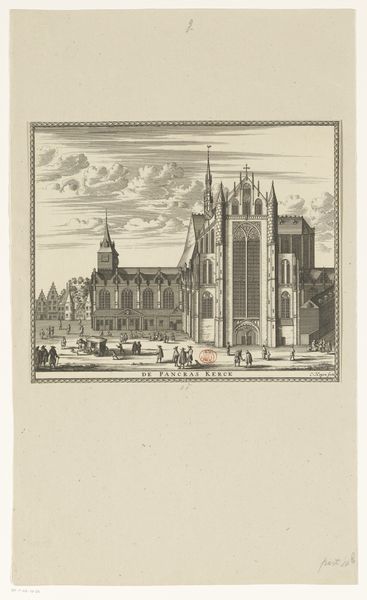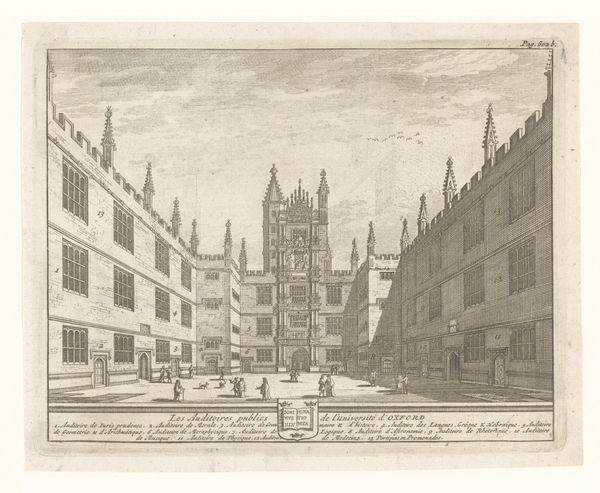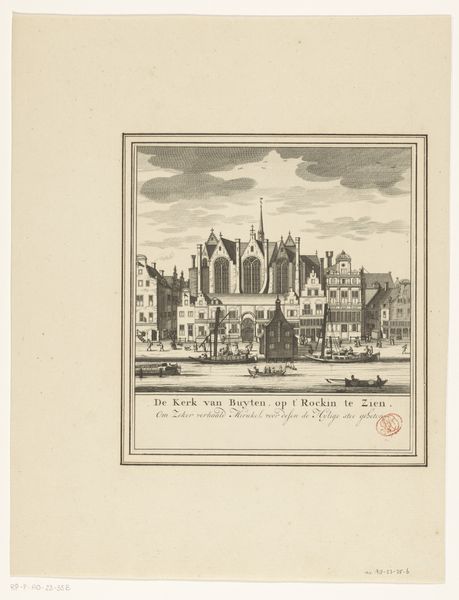
engraving, architecture
#
baroque
#
old engraving style
#
cityscape
#
engraving
#
architecture
#
realism
Dimensions: height 564 mm, width 450 mm
Copyright: Rijks Museum: Open Domain
Curator: This detailed view captures King's College Chapel in Cambridge, dating from after 1707. It's attributed to Johannes Kip and presented in a classic engraving style. The left portion is showcased, rendering an impressive baroque-era cityscape. Editor: My first impression is one of imposing grandeur, almost severe in its geometric precision. The lack of color amplifies the architectural presence, giving the structure a sense of timelessness and power. Curator: Indeed, the black and white medium, combined with the printmaking technique, heightens the rigid formality inherent in Baroque architectural depictions. It emphasizes the monumental scale that European institutions often deploy to project power and legitimacy. Notice how the architectural perspective seems to make the college loom over the viewer? Editor: Exactly, there's an overt power dynamic. But also consider how the seemingly objective rendering obscures the lived experiences of those within and around these walls. We see a very constructed, formal facade that undoubtedly leaves out those not centered in the institution’s intended power structure. Curator: Precisely! One should examine whose perspectives are prioritized and which narratives remain untold. While we appreciate the technical skill in this rendering of a famous institution, we also see a building frozen in an exclusive, privileged version of its history. It invites contemplation on who commissioned the piece and for what purposes. Editor: Furthermore, looking closely, there seems to be almost a deliberate absence of focus on the individuals within the image. They are tiny, seemingly inconsequential to the stone majesty of the chapel itself. This really drives home the power dynamic inherent to how we think of history in art, whose stories we amplify, and whose get erased or diminished in scale. Curator: Well observed. It forces a broader consideration: not merely an objective recording of space but also the inherent values ascribed to its visual retelling and institutional representation. It underlines that artworks like this served as instruments of institutional ideology as much as being artistic renderings. Editor: Absolutely. Pieces like this require engagement beyond simple admiration, inciting discussion around who dictates these historical narratives. Curator: It certainly presents a powerful way of perceiving our surrounding social architecture, both literally and figuratively. Editor: An important conversation for contemporary engagements, even now.
Comments
No comments
Be the first to comment and join the conversation on the ultimate creative platform.
